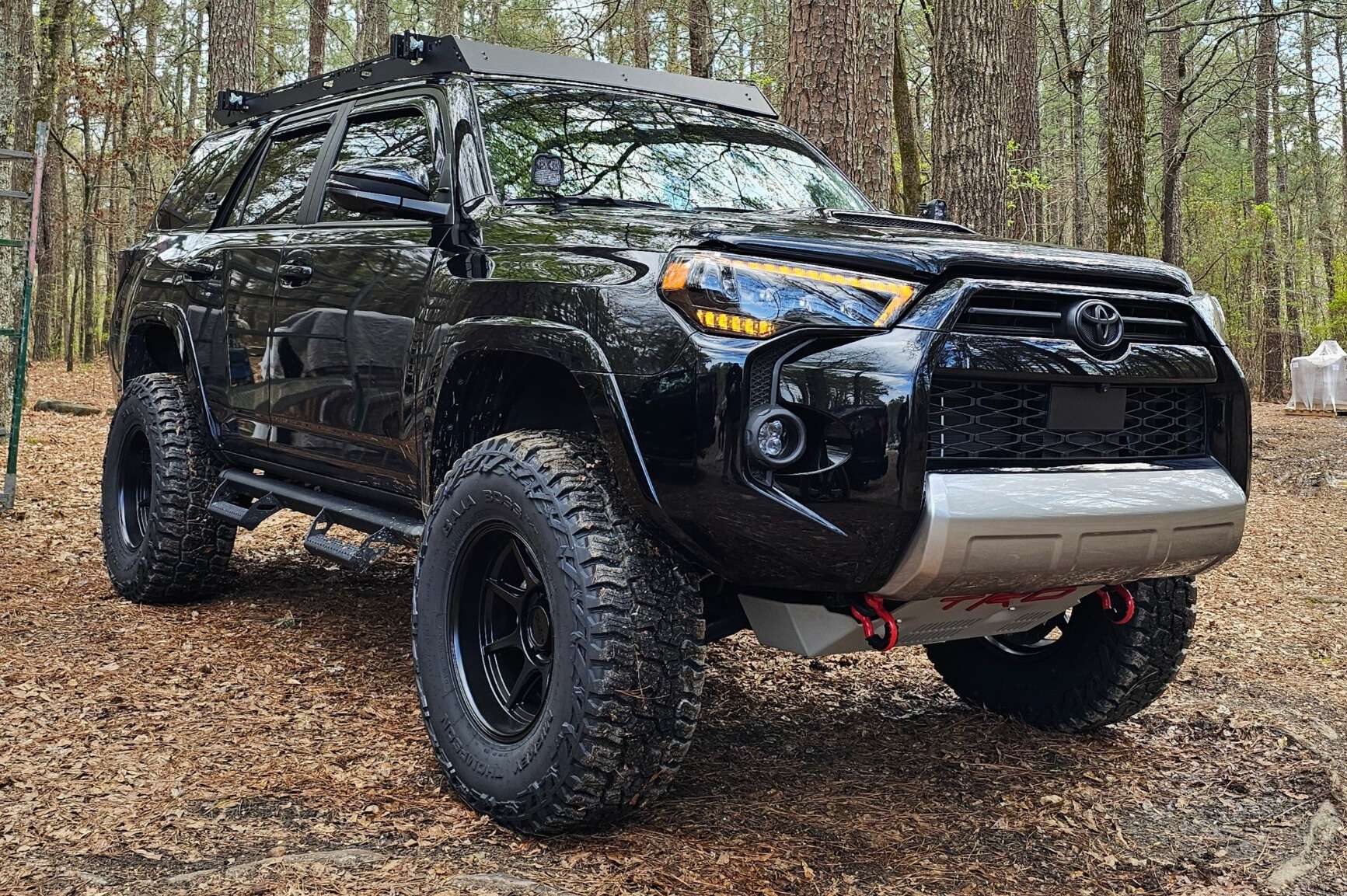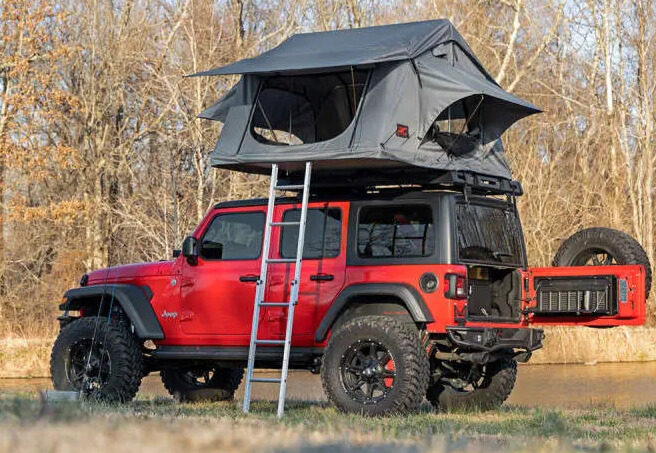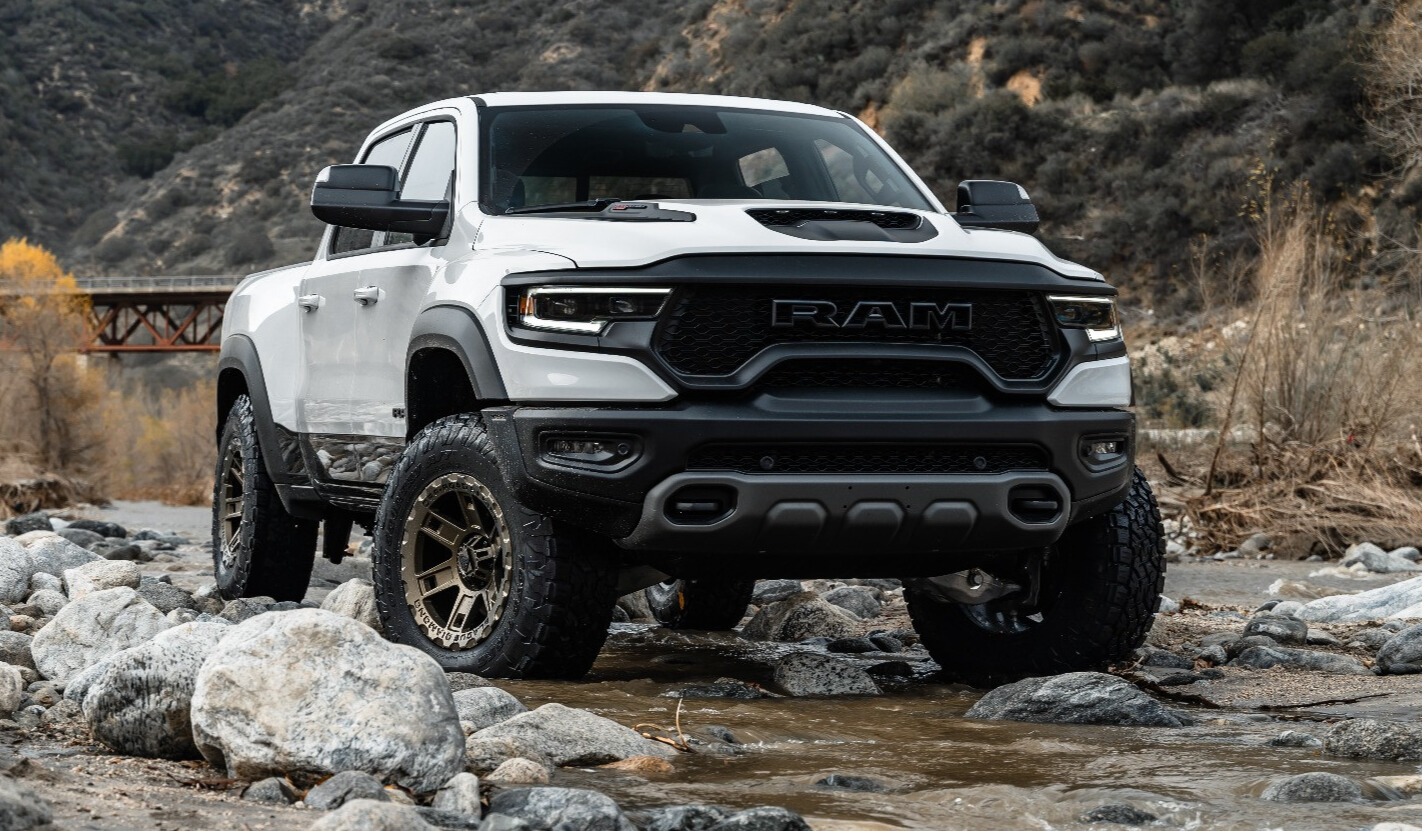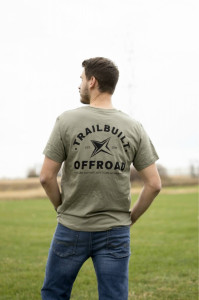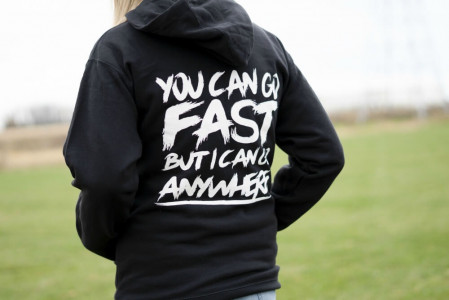How to Buy Larger Tires
September 6, 2024

How To Use Our Brand New Tire Flow Guide At TrailBuilt Off-Road
Table of Contents
Introduction
We hear a lot of people out on the trails or online wondering about what size tire they should be running. Whether you're a newbie or have some experience in off-roading, this question has probably crossed your mind at some point, so today, let's talk about the right size tires for your application.
We recently unveiled a brand-new tire flow that makes it easier than ever to see what tires you can size up to and still find a set that fits. So come with us today as we show you the ins and outs of this new guide so you can get the right tires for whatever you drive.
Step By Step Guide For Sizing Up Tires At TrailBuilt Off-Road

Step 1: Let's get after it - you'll start on this screen and tell us the year, make, model, trim level, and drivetrain of the truck, SUV or Jeep that you've got.

Step 2: We'll use a 2024 Wrangler Rubicon for this example - it's new, popular, and has plenty of fitment data both from our customer base and our gallery. After you've got your vehicle info filled out, click on "Get Tires."
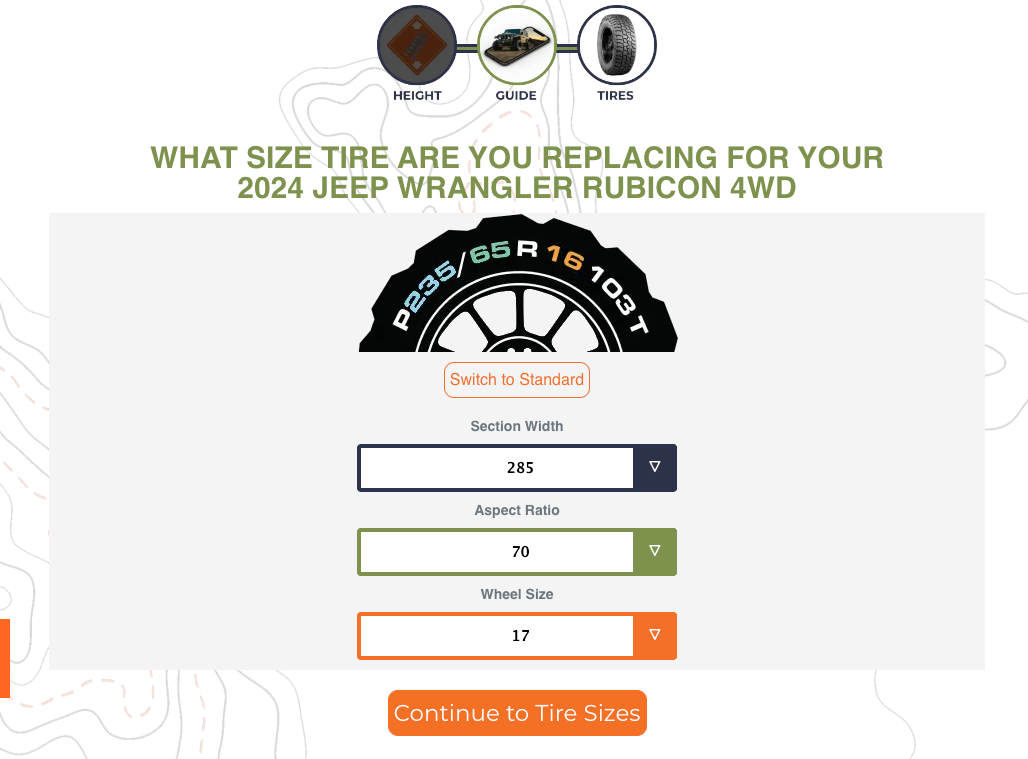
Step 3: Here, you should fill in the tire size that you're currently running on your SUV. The stock tire size for a 2024 Wrangler Rubicon is 285/70R17, so we'll punch that in. Then click on "Continue To Tire Sizes."
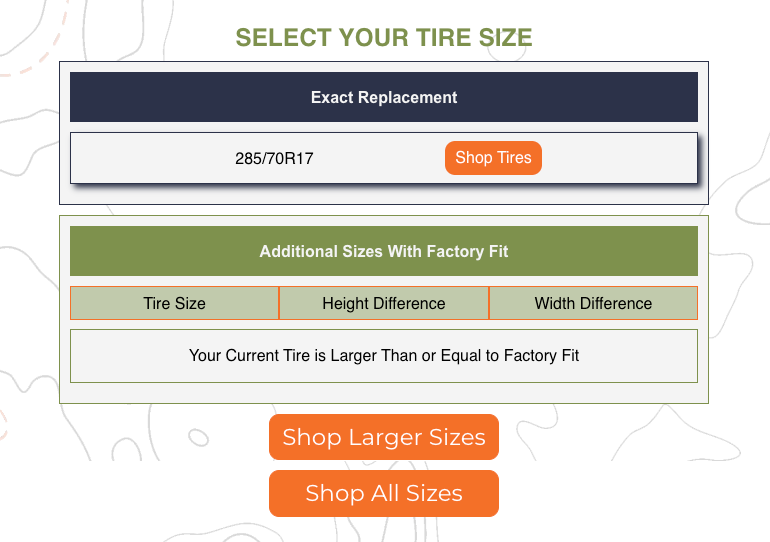
Step 4: Next, we'll show you the exact replacement tire size for your rig, as well as a shop button for you to get to our store easily - all results will be filtered down to this exact size. But if you want to go bigger and get crazier, you can click on "Shop Larger Sizes" where the real fun begins.
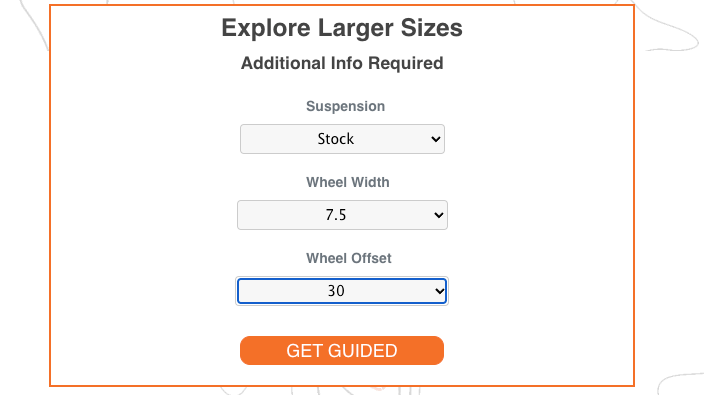
Step 5: If you want to size up your tires, we'll need some info first so we can show you what will fit your rig best, albeit with some trimming required in some cases. As in previous examples, we'll just use stock Wrangler Rubicon specs - 7.5-wide wheels with a +30mm offset and stock suspension.
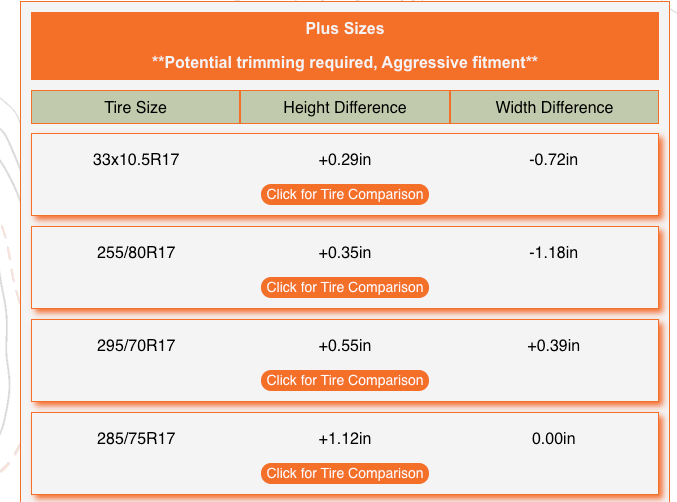
Step 6: Now, you'll be greeted with all available tire sizes you can size up to on your rig, along with their associated differences in height and width compared to your current set of tires. Click on "Tire Comparison" for more info here.
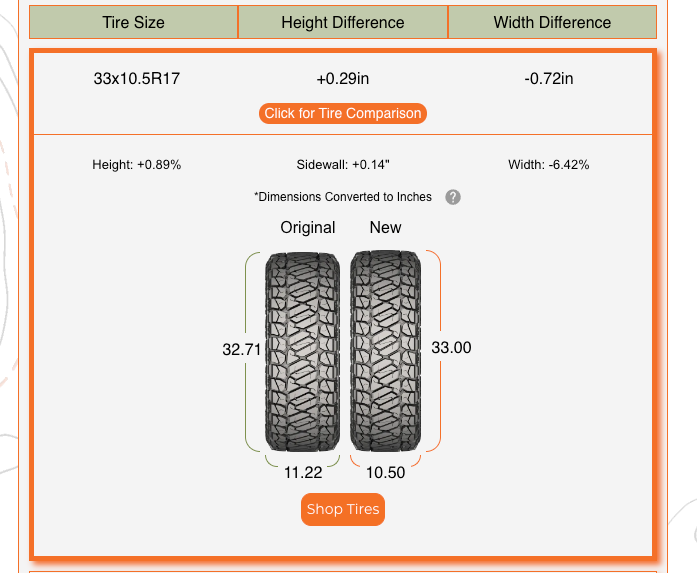
Step 7: This flyout module will show you what you can expect from your new tires in terms of sizing differences. Click on "Shop Tires" when you see the tires that you want, and you're off and running.
As we mentioned, keep in mind that as you go bigger and bigger with your tires, you'll probably need to do some additional modifications on your model in order to get them to fit. To find similar builds and see what drivers like you have had to do on their rigs, we'd recommend checking out our fitment gallery at TrailBuilt to find out what fits your model before you buy.
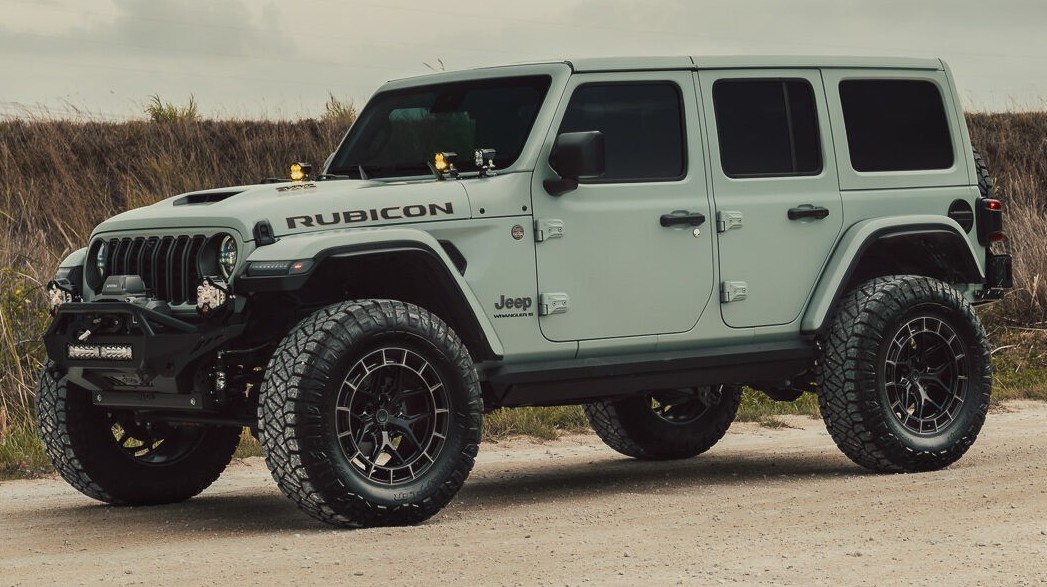
Considerations Needed As You Size Up To Larger Tires For Your Rig
So now that you know how to get your tires sized up, why exactly would you want to on your off-roader? Aren't stock tire sizes enough for most applications?
For most people that could be the case, but it's not a one size fits all proposition - there are many considerations you need to make and some situations that might necessitate you sizing up your rig's tires in the first place. We've gathered a list of our most common considerations to make while sizing up below.
1. Consider What You Use Your Vehicle For
This is a big point we want to cover - the right size tire for your ride will be determined mostly by what terrain you're using it for.
If you like to do some hardcore rock crawling or mud bogging, then you're going to want a larger tire than if you daily drive your off-road machine. Typically, if you live in a place that has diverse terrain like large rocks, loose gravel hills, mud, and snow but you still want to be able to drive to work, we recommend a 35 or 37. This will give you enough ground clearance to deal with a variety of terrain while not being overbearing when driving down the road.
2. Consider Your Lift
Some vehicles can get away with throwing a larger tire on and still fit properly without a lift kit. However, usually, this is not the case, so the next thing that we would recommend is that you consider what size lift kit you are going with. The larger the lift, typically the bigger tire you can run.
Remember, though, that you sacrifice road comfort and stability as you increase your tire size, so bigger doesn't always mean better, especially when it comes to road noise and drive quality on the pavement.
3. Offset
Next, we want you to consider the offset of the wheels you are running. If you're adding a lift or upsizing your tires and need to clear your suspension components, consider using a wheel that has a negative offset. The negative offset of the wheel will push it out, away from the suspension components, and give you more room.
4. Trimming
It's not uncommon for your larger tire to rub against parts of your vehicle. Trimming allows you to cut down pieces of your vehicle that get in the way of your tires. Depending on what size tire you choose, the amount of trimming will vary. Trimming can be as small as shaving a few inches off of some plastic in your wheel well or be as big as removing your bumpers.
Shop Tires & More For Your Rig at TrailBuilt Off-Road
We hope this helped you determine what size tires are right for you. If you're still wondering about fitment for your specific vehicle, head over to our gallery.
There, you can see exactly what others are running and even if they had to do any sort of trimming to make their setup work. When you're ready to buy, keep in mind that we offer financing, free shipping and quick delivery on all in-stock tires at TrailBuilt. We'll see you out on the trails!
